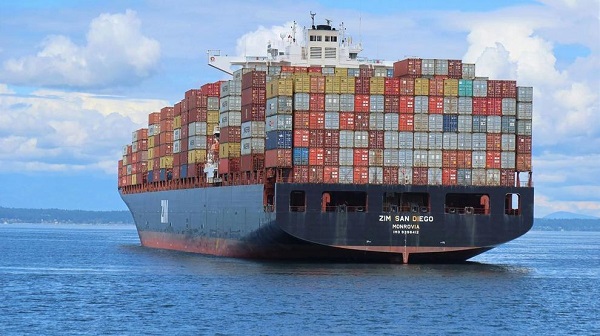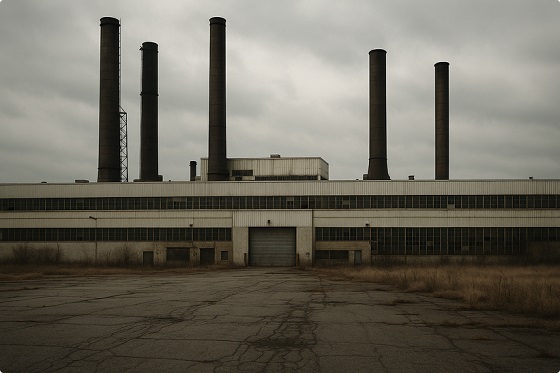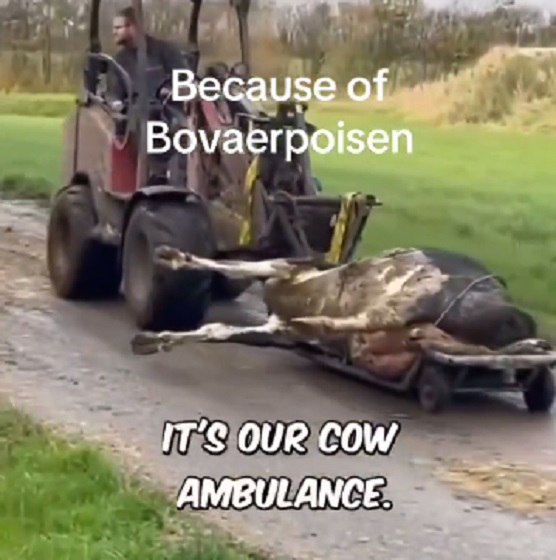Alberta
RCMP search for suspect leads to multiple shoot outs over 24 hours. Suspect dies from wounds.

News Release from the Alberta Serious Incident Response Team and Alberta RCMP
Investigation into fatal RCMP officer-involved shooting near High Prairie continues
On June 17, the Alberta Serious Incident Response Team (ASIRT) was directed to investigate the circumstances surrounding an encounter between members of the Royal Canadian Mounted Police (RCMP) and a 29-year-old man that took place that same day near High Prairie.
The incident was ongoing when the matter was assigned to ASIRT, and while the man was not believed to have sustained any injuries, ASIRT was directed to investigate on the basis that police officers had discharged their service firearms.
Following the assignment of the matter to ASIRT, RCMP officers continued to search for the man. On June 18, the man appeared at a containment point and a confrontation occurred during which officers discharged their firearms, fatally injuring the man. ASIRT’s investigation will examine not only the first encounter that resulted in the discharge of service weapons but also the circumstances surrounding the death of the man during the final encounter.
On June 17 at about 10:57 a.m., a fully-marked RCMP unit initiated a traffic stop on a red Cadillac which was associated with a 29-year-old man who had outstanding criminal warrants. The Cadillac fled from police, who did not pursue the vehicle. The RCMP officers who had attempted the traffic stop broadcast for other officers to be on the lookout for that vehicle, and at about 11:30 a.m., a different RCMP unit located the Cadillac just east of Range Road 175 about three kilometres north of Highway 679. The vehicle was stuck in the mud and partially covered with a blanket.
Two RCMP officers cleared the vehicle, which was unoccupied, and found a bag containing three different types of ammunition, as well as identification belonging to the man. Two additional police officers, one of them a Police Service Dog (PSD) handler, attended to the location. The PSD established a track and all four officers and the police dog began tracking east into thick bush for approximately three to six kilometres over about two hours. When the officers eventually encountered the man, whose identity was visually confirmed as the wanted 29 year old, the man and police exchanged gunfire. During this incident, the PSD was struck by gunfire and killed. No police officers were injured during this incident, nor was the man believed to have been struck. The officers received direction to disengage, and were removed from the area by a civilian Search and Rescue helicopter.
Additional police resources were deployed to the area, including members of the RCMP’s Emergency Response Team (ERT). ERT members attended to the area of the initial incident, and again encountered the man. During this encounter, several police officers discharged their firearms. At the time, the officers believed the man had been struck. After attempts to communicate with the man or force him out of the thick bush were unsuccessful, a physical search of the area was conducted, but failed to locate the man.
After a lengthy search through dense brush spanning several hours, police made contact with the man on two additional occasions, and issued verbal commands to him. No shots were fired during these encounters, and officers were able to establish that the man did not, in fact, appear to be injured.
Police established containment around the roads in the area and continued searching for the man. On June 18, at about 11:45 a.m., two RCMP officers who were assigned to maintain containment spotted the man in a ditch on the west side of Range Road 170, about two kilometres north of Township Road 770. The officers exited their marked police vehicle and a confrontation occurred between the man and the police officers, during which both officers discharged their service firearms. The man fell to the ground in the tall grass, and additional police officers and ERT medical officers responded to the area. Medical officers attempted to treat the man, but ultimately he died at the scene. A loaded semi-automatic .22-calibre rifle, as well as a range finder, were recovered from the incident scene and have been seized as exhibits.
ASIRT’s investigation will examine the actions of police during this incident, while the RCMP will maintain responsibility for the investigation of the man and his actions. As ASIRT’s investigation is underway, no further information will be released at this time.
ASIRT’s mandate is to effectively, independently and objectively investigate incidents involving Alberta’s police that have resulted in serious injury or death to any person, as well as serious or sensitive allegations of police misconduct.
Alberta
Alberta government’s plan will improve access to MRIs and CT scans

From the Fraser Institute
By Nadeem Esmail and Tegan Hill
The Smith government may soon allow Albertans to privately purchase diagnostic screening and testing services, prompting familiar cries from defenders of the status quo. But in reality, this change, which the government plans to propose in the legislature in the coming months, would simply give Albertans an option already available to patients in every other developed country with universal health care.
It’s important for Albertans and indeed all Canadians to understand the unique nature of our health-care system. In every one of the 30 other developed countries with universal health care, patients are free to seek care on their own terms with their own resources when the universal system is unwilling or unable to satisfy their needs. Whether to access care with shorter wait times and a more rapid return to full health, to access more personalized services or meet a personal health need, or to access new advances in medical technology. But not in Canada.
That prohibition has not served Albertans well. Despite being one of the highest-spending provinces in one of the most expensive universal health-care systems in the developed world, Albertans endure some of the longest wait times for health care and some of the worst availability of advanced diagnostic and medical technologies including MRI machines and CT scanners.
Introducing new medical technologies is a costly endeavour, which requires money and the actual equipment, but also the proficiency, knowledge and expertise to use it properly. By allowing Albertans to privately purchase diagnostic screening and testing services, the Smith government would encourage private providers to make these technologies available and develop the requisite knowledge.
Obviously, these new providers would improve access to these services for all Alberta patients—first for those willing to pay for them, and then for patients in the public system. In other words, adding providers to the health-care system expands the supply of these services, which will reduce wait times for everyone, not just those using private clinics. And relief can’t come soon enough. In Alberta, in 2024 the median wait time for a CT scan was 12 weeks and 24 weeks for an MRI.
Greater access and shorter wait times will also benefit Albertans concerned about their future health or preventative care. When these Albertans can quickly access a private provider, their appointments may lead to the early discovery of medical problems. Early detection can improve health outcomes and reduce the amount of public health-care resources these Albertans may ultimately use in the future. And that means more resources available for all other patients, to the benefit of all Albertans including those unable to access the private option.
Opponents of this approach argue that it’s a move towards two-tier health care, which will drain resources from the public system, or that this is “American-style” health care. But these arguments ignore that private alternatives benefit all patients in universal health-care systems in the rest of the developed world. For example, Switzerland, Germany, the Netherlands and Australia all have higher-performing universal systems that provide more timely care because of—not despite—the private options available to patients.
In reality, the Smith government’s plan to allow Albertans to privately purchase diagnostic screening and testing services is a small step in the right direction to reduce wait times and improve health-care access in the province. In fact, the proposal doesn’t go far enough—the government should allow Albertans to purchase physician appointments and surgeries privately, too. Hopefully the Smith government continues to reform the province’s health-care system, despite ill-informed objections, with all patients in mind.
Alberta
Canada’s heavy oil finds new fans as global demand rises

From the Canadian Energy Centre
By Will Gibson
“The refining industry wants heavy oil. We are actually in a shortage of heavy oil globally right now, and you can see that in the prices”
Once priced at a steep discount to its lighter, sweeter counterparts, Canadian oil has earned growing admiration—and market share—among new customers in Asia.
Canada’s oil exports are primarily “heavy” oil from the Alberta oil sands, compared to oil from more conventional “light” plays like the Permian Basin in the U.S.
One way to think of it is that heavy oil is thick and does not flow easily, while light oil is thin and flows freely, like fudge compared to apple juice.
“The refining industry wants heavy oil. We are actually in a shortage of heavy oil globally right now, and you can see that in the prices,” said Susan Bell, senior vice-president of downstream research with Rystad Energy.
A narrowing price gap
Alberta’s heavy oil producers generally receive a lower price than light oil producers, partly a result of different crude quality but mainly because of the cost of transportation, according to S&P Global.
The “differential” between Western Canadian Select (WCS) and West Texas Intermediate (WTI) blew out to nearly US$50 per barrel in 2018 because of pipeline bottlenecks, forcing Alberta to step in and cut production.
So far this year, the differential has narrowed to as little as US$10 per barrel, averaging around US$12, according to GLJ Petroleum Consultants.
“The differential between WCS and WTI is the narrowest I’ve seen in three decades working in the industry,” Bell said.
Trans Mountain Expansion opens the door to Asia

Oil tanker docked at the Westridge Marine Terminal in Burnaby, B.C. Photo courtesy Trans Mountain Corporation
The price boost is thanks to the Trans Mountain expansion, which opened a new gateway to Asia in May 2024 by nearly tripling the pipeline’s capacity.
This helps fill the supply void left by other major regions that export heavy oil – Venezuela and Mexico – where production is declining or unsteady.
Canadian oil exports outside the United States reached a record 525,000 barrels per day in July 2025, the latest month of data available from the Canada Energy Regulator.
China leads Asian buyers since the expansion went into service, along with Japan, Brunei and Singapore, Bloomberg reports. 
Asian refineries see opportunity in heavy oil
“What we are seeing now is a lot of refineries in the Asian market have been exposed long enough to WCS and now are comfortable with taking on regular shipments,” Bell said.
Kevin Birn, chief analyst for Canadian oil markets at S&P Global, said rising demand for heavier crude in Asia comes from refineries expanding capacity to process it and capture more value from lower-cost feedstocks.
“They’ve invested in capital improvements on the front end to convert heavier oils into more valuable refined products,” said Birn, who also heads S&P’s Center of Emissions Excellence.
Refiners in the U.S. Gulf Coast and Midwest made similar investments over the past 40 years to capitalize on supply from Latin America and the oil sands, he said.
While oil sands output has grown, supplies from Latin America have declined.
Mexico’s state oil company, Pemex, reports it produced roughly 1.6 million barrels per day in the second quarter of 2025, a steep drop from 2.3 million in 2015 and 2.6 million in 2010.
Meanwhile, Venezuela’s oil production, which was nearly 2.9 million barrels per day in 2010, was just 965,000 barrels per day this September, according to OPEC.
The case for more Canadian pipelines

Worker at an oil sands SAGD processing facility in northern Alberta. Photo courtesy Strathcona Resources
“The growth in heavy demand, and decline of other sources of heavy supply has contributed to a tighter market for heavy oil and narrower spreads,” Birn said.
Even the International Energy Agency, known for its bearish projections of future oil demand, sees rising global use of extra-heavy oil through 2050.
The chief impediments to Canada building new pipelines to meet the demand are political rather than market-based, said both Bell and Birn.
“There is absolutely a business case for a second pipeline to tidewater,” Bell said.
“The challenge is other hurdles limiting the growth in the industry, including legislation such as the tanker ban or the oil and gas emissions cap.”
A strategic choice for Canada
Because Alberta’s oil sands will continue a steady, reliable and low-cost supply of heavy oil into the future, Birn said policymakers and Canadians have options.
“Canada needs to ask itself whether to continue to expand pipeline capacity south to the United States or to access global markets itself, which would bring more competition for its products.”
-

 Daily Caller1 day ago
Daily Caller1 day agoUS Eating Canada’s Lunch While Liberals Stall – Trump Admin Announces Record-Shattering Energy Report
-

 Censorship Industrial Complex2 days ago
Censorship Industrial Complex2 days agoHow the UK and Canada Are Leading the West’s Descent into Digital Authoritarianism
-

 Energy1 day ago
Energy1 day agoEby should put up, shut up, or pay up
-

 Business14 hours ago
Business14 hours agoU.S. Supreme Court frosty on Trump’s tariff power as world watches
-

 Business2 days ago
Business2 days agoCapital Flight Signals No Confidence In Carney’s Agenda
-

 espionage8 hours ago
espionage8 hours agoU.S. Charges Three More Chinese Scholars in Wuhan Bio-Smuggling Case, Citing Pattern of Foreign Exploitation in American Research Labs
-

 Business2 days ago
Business2 days agoFederal budget: Carney government posts largest deficit in Canadian history outside pandemic
-

 International2 days ago
International2 days agoThe capital of capitalism elects a socialist mayor






